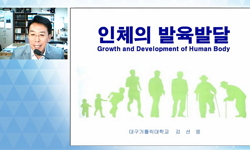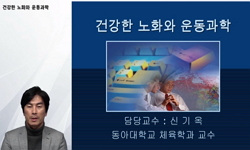The purpose of this study was to examine the effects of hemispheric damage in body composition of male adults with stroke experiences. The Fourth and Fifth Korea National Health and Nutrition Examination Surveys (KNHANES) with body composition results...
http://chineseinput.net/에서 pinyin(병음)방식으로 중국어를 변환할 수 있습니다.
변환된 중국어를 복사하여 사용하시면 됩니다.
- 中文 을 입력하시려면 zhongwen을 입력하시고 space를누르시면됩니다.
- 北京 을 입력하시려면 beijing을 입력하시고 space를 누르시면 됩니다.

Effects of Regularly Performed Walking on the Bilateral Limb Compositions of Post-Stroke Korean Men
한글로보기부가정보
다국어 초록 (Multilingual Abstract)
Mixed results in left and right limb compositions were shown between the groups. When the subjects were further divided based on walking days per week, sedentary (walk ≤2 d/wk) post-stroke group showed significantly greater fat mass and less lean mass than the physically active people (walk ≥ 3d/wk). In comparison to the healthy sedentary and physically active controls, two post-stroke groups showed greater variations. The results indicate that physical activity maintains or improve the quality of both the upper and lower limb composition in patients with post-stroke men.
The purpose of this study was to examine the effects of hemispheric damage in body composition of male adults with stroke experiences. The Fourth and Fifth Korea National Health and Nutrition Examination Surveys (KNHANES) with body composition results obtained from the DXA (dual-energy X-ray absorptiometry) assessments were used for this study. Survey data of 18 post-stroke men and 28 healthy controls were obtained. Both the lean and fat masses of the upper and lower limbs were utilized to compare for the compositions between the limbs in post-stroke subjects. In addition, the effect of exercise habit was also observed for the influence of physical activity in body composition.
Mixed results in left and right limb compositions were shown between the groups. When the subjects were further divided based on walking days per week, sedentary (walk ≤2 d/wk) post-stroke group showed significantly greater fat mass and less lean mass than the physically active people (walk ≥ 3d/wk). In comparison to the healthy sedentary and physically active controls, two post-stroke groups showed greater variations. The results indicate that physical activity maintains or improve the quality of both the upper and lower limb composition in patients with post-stroke men.
참고문헌 (Reference)
1 Claire E. Lee, "The role of hormones, cytokines and heat shock proteins during age-related muscle loss" Elsevier BV 26 (26): 524-534, 2007
2 Scherbakov, N, "Strokerelated sarcopenia: specific characteristics" 16 (16): 272-276, 2015
3 Scherbakov, N, "Stroke induced Sarcopenia: muscle wasting and disability after stroke" 170 (170): 89-94, 2013
4 Scherbakov, N, "Stroke induced Sarcopenia: muscle wasting and disability after stroke" 170 (170): 89-94, 2013
5 William J Evans, "Skeletal muscle loss: cachexia, sarcopenia, and inactivity" Oxford University Press (OUP) 91 (91): 1123S-1127S, 2010
6 Jennifer L. Hunnicutt, "Skeletal muscle changes following stroke: a systematic review and comparison to healthy individuals" Informa UK Limited 24 (24): 463-471, 2017
7 Hunnicutt, JL, "Skeletal muscle changes following stroke: a systematic review and comparison to healthy individuals" 1-9, 2017
8 Hafer-Macko, CE, "Skeletal muscle changes after hemiparetic stroke and potential beneficial effects of exercise intervention strategies" 45 (45): 261-272, 2008
9 Fielding, RA, "Sarcopenia: an undiagnosed condition in older adults. Current consensus definition: prevalence, etiology, and consequences. International working group on sarcopenia" 12 (12): 249-256, 2011
10 English, C, "Reviews: Loss of skeletal muscle mass after stroke: a systematic review" 5 (5): 395-402, 2010
1 Claire E. Lee, "The role of hormones, cytokines and heat shock proteins during age-related muscle loss" Elsevier BV 26 (26): 524-534, 2007
2 Scherbakov, N, "Strokerelated sarcopenia: specific characteristics" 16 (16): 272-276, 2015
3 Scherbakov, N, "Stroke induced Sarcopenia: muscle wasting and disability after stroke" 170 (170): 89-94, 2013
4 Scherbakov, N, "Stroke induced Sarcopenia: muscle wasting and disability after stroke" 170 (170): 89-94, 2013
5 William J Evans, "Skeletal muscle loss: cachexia, sarcopenia, and inactivity" Oxford University Press (OUP) 91 (91): 1123S-1127S, 2010
6 Jennifer L. Hunnicutt, "Skeletal muscle changes following stroke: a systematic review and comparison to healthy individuals" Informa UK Limited 24 (24): 463-471, 2017
7 Hunnicutt, JL, "Skeletal muscle changes following stroke: a systematic review and comparison to healthy individuals" 1-9, 2017
8 Hafer-Macko, CE, "Skeletal muscle changes after hemiparetic stroke and potential beneficial effects of exercise intervention strategies" 45 (45): 261-272, 2008
9 Fielding, RA, "Sarcopenia: an undiagnosed condition in older adults. Current consensus definition: prevalence, etiology, and consequences. International working group on sarcopenia" 12 (12): 249-256, 2011
10 English, C, "Reviews: Loss of skeletal muscle mass after stroke: a systematic review" 5 (5): 395-402, 2010
11 MacIntyre, NJ, "Relationships between calf muscle density and muscle strength, mobility and bone status in the stroke survivors with subacute and chronic lower limb hemiparesis" 10 (10): 249-255, 2010
12 Arasaki, K, "Reduction in the motor unit number estimate (MUNE) after cerebral infarction" 60 : 189-195, 2009
13 Billinger, SA, "Physical activity and exercise recommendations for stroke survivors" 45 (45): 2532-2553, 2014
14 Saunders, DH, "Physical activity and exercise after stroke" 45 (45): 3742-3747, 2014
15 Norifumi Metoki, "Muscular Atrophy in the Hemiplegic Thigh in Patients After Stroke" Ovid Technologies (Wolters Kluwer Health) 82 (82): 862-865, 2003
16 Carin-Levy, G, "Longitudinal changes in muscle strength and mass after acute stroke" 21 (21): 201-207, 2006
17 Gail Carin-Levy, "Longitudinal Changes in Muscle Strength and Mass after Acute Stroke" S. Karger AG 21 (21): 201-207, 2006
18 Morris, JH, "Interventions to promote long-term participation in physical activity after stroke: a systematic review of the literature" 95 (95): 956-967, 2014
19 Ryan, AS, "Hemiparetic muscle atrophy and increased intramuscular fat in stroke patients" 83 (83): 1703-1707, 2002
20 Alice S. Ryan, "Hemiparetic muscle atrophy and increased intramuscular fat in stroke patients" Elsevier BV 83 (83): 1703-1707, 2002
21 Roger, VL, "Heart Disease and Stroke Statistics-2011 update: a report from the American Heart Association" 123 (123): e18-e209, 2011
22 Jee, H, "Feasibility of a Semi-computerized Line Bisection Test for Unilateral Visual Neglect Assessment" 6 (6): 400-417, 2015
23 Zbigniew Marcin Ossowski, "Effects of short-term Nordic walking training on sarcopenia-related parameters in women with low bone mass: a preliminary study" Dove Medical Press Ltd. Volume 11 : 1763-1771, 2016
24 Kortebein, P, "Effect of 10 days of bed rest on skeletal muscle in healthy older adults" 297 (297): 1769-1774, 2007
25 Jee, H., "Comparisons of the body Composition and the effects of Physical activity on the Upper and Lower Limbs of the Female Post-Stroke Patients" 10 (10): 3074-3080, 2017
26 Masafumi Nozoe, "Changes in quadriceps muscle thickness in acute non-ambulatory stroke survivors" Informa UK Limited 23 (23): 8-14, 2015
27 L Jørgensen, "Changes in muscle mass, fat mass, and bone mineral content in the legs after stroke: a 1 year prospective study" Elsevier BV 28 (28): 655-659, 2001
28 Birgit Vahlberg, "Body composition and physical function after progressive resistance and balance training among older adults after stroke: an exploratory randomized controlled trial" Informa UK Limited 39 (39): 1207-1214, 2016
29 Birgit Vahlberg, "Body composition and physical function after progressive resistance and balance training among older adults after stroke: an exploratory randomized controlled trial" Informa UK Limited 39 (39): 1207-1214, 2016
동일학술지(권/호) 다른 논문
-
- 국제물리치료연구학회
- 강정일
- 2018
- KCI등재
-
Assessment and Comparison of Isokinetic Strength of Hip, Knee and Ankle Joints in Young Adults
- 국제물리치료연구학회
- 김용환
- 2018
- KCI등재
-
- 국제물리치료연구학회
- 김보경
- 2018
- KCI등재
-
Effects of Fall Experience on the Balancing Ability and Ankle Flexibility in Elderly People
- 국제물리치료연구학회
- 김홍래
- 2018
- KCI등재
분석정보
인용정보 인용지수 설명보기
학술지 이력
| 연월일 | 이력구분 | 이력상세 | 등재구분 |
|---|---|---|---|
| 2027 | 평가예정 | 재인증평가 신청대상 (재인증) | |
| 2021-01-01 | 평가 | 등재학술지 유지 (재인증) |  |
| 2018-01-01 | 평가 | 등재학술지 선정 (계속평가) |  |
| 2016-01-01 | 평가 | 등재후보학술지 선정 (신규평가) |  |
| 2014-07-08 | 학회명변경 | 한글명 : 국제물리치료학회 -> 국제물리치료연구학회 |
학술지 인용정보
| 기준연도 | WOS-KCI 통합IF(2년) | KCIF(2년) | KCIF(3년) |
|---|---|---|---|
| 2016 | 0 | 0 | 0 |
| KCIF(4년) | KCIF(5년) | 중심성지수(3년) | 즉시성지수 |
| 0 | 0 | 0 | 0 |




 KCI
KCI






